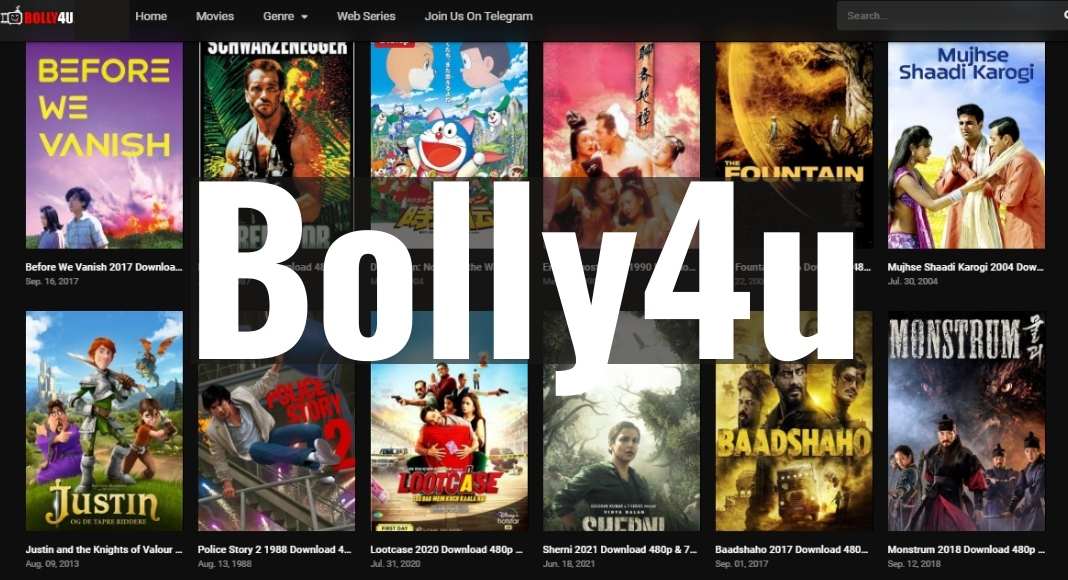Is the allure of instant entertainment and cost-free access to the cinematic world too tempting to resist? The proliferation of websites offering pirated movies has cast a long shadow over the film industry, threatening its very existence.
The digital age has brought with it unprecedented convenience, allowing us to access a vast library of content with just a few clicks. However, this convenience has also paved the way for the widespread availability of pirated movies, a practice that poses a significant threat to the film industry. Websites like Bolly4u, and others operating in the shadows, offer users the chance to download or stream movies for free, bypassing the traditional channels of distribution and undermining the revenue streams of filmmakers, actors, and everyone involved in the production process.
The consequences of movie piracy are far-reaching and multifaceted. Financially, the industry suffers significant losses. When movies are illegally copied and distributed, the revenue generated from theatrical releases, DVD sales, and legitimate streaming services plummets. This loss of revenue affects not only the major studios but also the smaller independent filmmakers who rely on these income streams to finance their projects. The impact extends beyond financial considerations. Piracy can stifle creativity and innovation. When the financial incentives to produce high-quality films are diminished, studios may be less willing to take risks on new and original content. This can lead to a decline in the quality of films available to the public, as studios focus on safer, more commercially viable projects.
The issue of movie piracy is further complicated by the global nature of the internet. Websites offering pirated content can be hosted in countries with lax copyright laws, making it difficult to shut them down. The anonymity afforded by the internet also allows individuals to download and share pirated movies without fear of immediate repercussions. The rise of high-speed internet and readily available storage devices has made it easier than ever to download and store large files, further fueling the piracy problem.
Furthermore, the availability of pirated content undermines the efforts of legitimate streaming services. Platforms like Netflix, Zee5, and others invest heavily in acquiring the rights to stream movies legally. Piracy undermines the value of these services, as users can often find the same content for free on illegal websites. This creates an uneven playing field, where legitimate businesses struggle to compete with those operating outside the law.
The motivations behind movie piracy are complex. Some individuals may simply be unable to afford the cost of watching movies through legitimate channels. Others may view it as a victimless crime, believing that the studios and production companies are wealthy enough to absorb the losses. Still, others may be drawn to the convenience of accessing movies for free or the novelty of obtaining content before it is officially released.
The fight against movie piracy requires a multi-pronged approach. Law enforcement agencies must actively pursue and shut down illegal websites and prosecute those involved in the distribution of pirated content. Copyright laws must be updated and enforced to reflect the realities of the digital age. Educational campaigns are needed to raise awareness about the harms of piracy and to encourage consumers to support the film industry by watching movies legally.
In addition to legal and enforcement efforts, the film industry itself has a role to play in combating piracy. This includes developing innovative distribution models that make movies more accessible and affordable to consumers. The industry should also focus on providing a superior viewing experience through high-quality streaming services and premium content.
The existence of websites like Bolly4u highlights a critical issue. These platforms, operating outside legal frameworks, offer a vast array of content, including Bollywood, Tollywood, and Hollywood movies, often with Hindi dubbing, catering to a broad audience. The easy availability of movies in various formats, such as 300MB downloads, 480p, 720p, and even 1080p and 4K resolutions, has significantly contributed to their appeal.
Websites like these often benefit from lax enforcement of copyright laws in certain regions. This lack of oversight allows them to thrive, offering content that should be enjoyed through legal channels such as Zee5 or other streaming providers. The convenience of these sites, however, should not overshadow their negative impact. The consequences of movie piracy include financial losses for filmmakers, actors, and other personnel contributing to film production.
The impact of piracy isn't limited to finances. It also affects the quality of content. When revenue streams are disrupted, filmmakers are less likely to invest in creative projects. This can influence the types of movies that are made, resulting in a shift toward safer, commercially viable options instead of innovative, original content.
The internet's global scope complicates the fight against piracy. Websites can be hosted in countries with weak copyright laws, and the anonymity it provides makes it hard to track down the individuals involved. The ease of downloading and sharing large files has also made piracy a widespread issue.
Legitimate streaming services invest heavily in securing the rights to stream content. Piracy devalues these services, creating unfair competition. The convenience offered by illegal sites should not be mistaken for harmless entertainment. They actively hurt the industry and the people who make the movies.
The motivations behind piracy are complex. Some people may lack the financial means to watch movies through legal channels, while others might view it as a victimless crime. Others are simply drawn to the convenience of free content.
Fighting piracy requires a multifaceted approach. Law enforcement must take action against illegal websites and prosecute those involved. Copyright laws need to be updated and enforced in the digital age. Educational campaigns can raise awareness about the harms of piracy and encourage legal viewing.
The film industry can also play a role by creating distribution models that make movies more accessible and affordable. They should focus on providing a superior viewing experience through high-quality streaming services and premium content.
The popularity of websites like Filmywap, known for providing HD quality movies, highlights the demand for accessible entertainment. However, the existence of these platforms underscores the need to protect the film industry's revenue and ensure the continued production of quality content.
The proliferation of these websites necessitates a proactive approach. This includes educating the public about the legal and ethical implications of accessing pirated content and the importance of supporting legitimate channels. The film industry and its stakeholders need to collaborate with law enforcement and policymakers to find and implement comprehensive solutions that protect their intellectual property rights while also meeting the consumer's demand for convenient and affordable entertainment.
The landscape of online entertainment is continually evolving. With new platforms and technologies emerging regularly, the film industry faces constant challenges in safeguarding its creative output. This requires a flexible strategy that adapts to the changing environment. Efforts to combat piracy must go hand in hand with efforts to provide a viable alternative for consumers, such as expanding legal streaming options and improving the user experience.
The future of the film industry depends on its ability to protect its revenue streams while offering viewers a compelling reason to choose legal alternatives. By addressing both the supply and demand sides of the piracy equation, the industry can ensure its long-term sustainability and continue to bring creative content to audiences around the world.
One key aspect of this evolving landscape is the increasing prevalence of dual-audio content, as seen with Bollywood and Hollywood movies available with Hindi dubbing. The ability to choose between original audio and dubbed versions expands the reach of films and caters to a more diverse audience. This trend presents both opportunities and challenges. While it can attract more viewers, it also necessitates careful management of copyright and distribution rights.
In summary, the film industry must remain vigilant and adaptable in its battle against piracy. By combining robust legal strategies with innovative distribution models, and by educating the public about the consequences of piracy, the industry can protect its creative output and ensure its continued success in the digital age.


